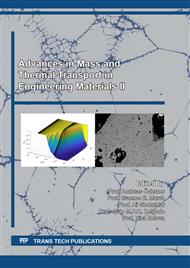p.3
p.19
p.29
p.47
p.65
p.77
p.84
p.91
On the Analytical Inversion of Solver Matrices Used in Numerical Approximations for the Diffusion Equation
Abstract:
The goal of this paper is to introduce an analytical approach for the inversion of nxn solver matrices, which are typically used in Finite Difference Method approximations. In the present case, they are used to solve the Diffusion Equation numerically, since in many physics and engineering fields, partial differential equations cannot be solved analytically. The method presented in this work is primarily formulated for cylindrical coordinates, which are often used in Gas Release Experiments as those described in [8]. However, it is possible to introduce a generalized method, which also allows solutions for Cartesian solvers. The advantage of having the explicit inverse is considerable, since the computational effort is reduced. In this paper we also carry out an investigation on the eigenvalues of the backward and forward solver matrix in order to determine an optimal range for the discretization parameters.
Info:
Periodical:
Pages:
3-18
Citation:
Online since:
December 2021
Price:
Сopyright:
© 2021 Trans Tech Publications Ltd. All Rights Reserved
Share:
Citation:


